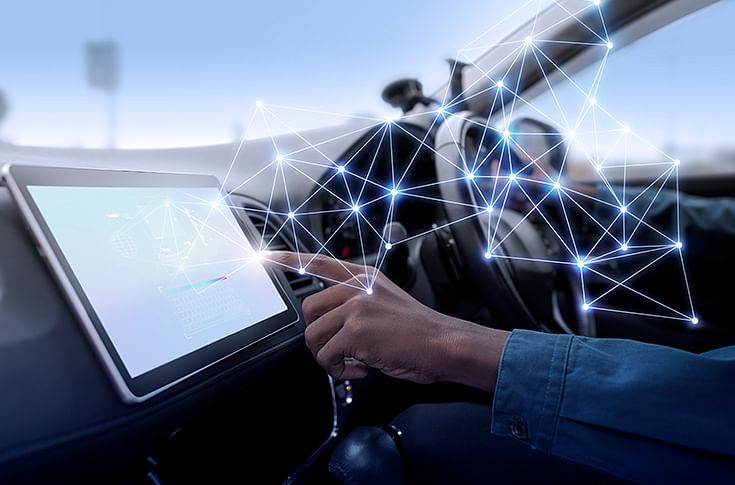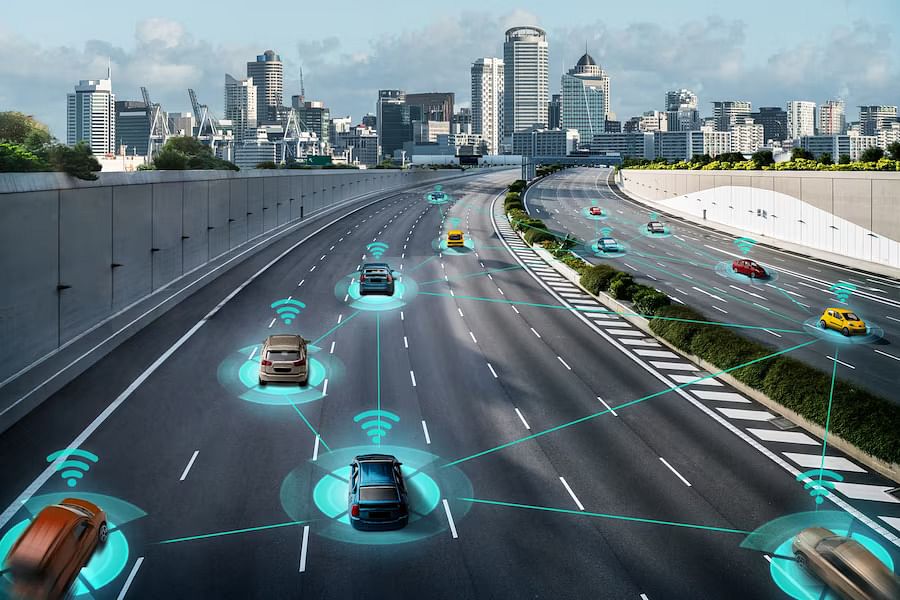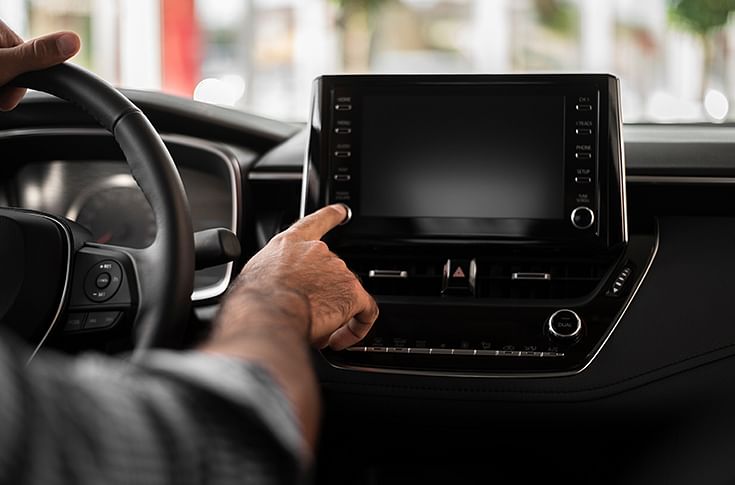‘We work with eight out of 10 PV OEMs globally on our connectivity platform’: Avneesh Prakash, Vice President, Mobility, Tata Communications
By embedding connectivity upfront at the chip level, we have simplified the entire supply chain and the ecosystem, says Avneesh Prakash.
With the ever-growing need to always stay connected, homegrown technology major Tata Communications which is working with global OEMs, estimates that the Indian passenger vehicle market will see up to 85 percent of vehicles getting connected over the next 12-18 months, with connectivity features bundled into the infotainment unit foraying into lower-end models as well. Avneesh Prakash, Vice President, Mobility, Tata Communications further explained that automotive OEMs are set to rely a certain focus of their revenues on subscription services and explore its potential.
How is Tata Communications bringing its expertise in connectivity to serve the requirements of the automotive industry?
The automotive industry has been the first mover in taking to innovation in the IoT space. It is today one of the most-advanced industries, and all stakeholders are really pushing the boundaries when it comes to moving towards new technologies. Vehicles are increasingly becoming software-defined, and there is an accelerated adoption of technology, IoT and its related ecosystem in the automotive industry. While the future will rely on software-defined vehicles (SDVs), a part of its computing will lie elsewhere, and therefore, connectivity will become of paramount importance, and vehicles need to be always on, always connected, and always up-to-date.
This is the theme that we are pursuing, and are helping our automotive customers in these domains. Our multi-modal connectivity goes beyond cellular and helps automotive OEMs ensure that vehicles are always connected as sometimes the vehicle connectivity can drop when it is traversing through varied geographies.
The recently-mandated AIS-38 norms, for instance, require an EV battery to continuously stream data to enable monitoring its health from a safety perspective. Therefore, it is a fundamentally- different use case than a feature download on the infotainment system.
 With such varied use cases, while the need for connectivity is continuous, it is also context aware, and that is why we are innovating on our multi-modal connectivity platform. Moreover, the growing software content in cars is also driving the need for over-the-air (OTA) updates, and that has been an area that has been a challenge for several OEMs.
With such varied use cases, while the need for connectivity is continuous, it is also context aware, and that is why we are innovating on our multi-modal connectivity platform. Moreover, the growing software content in cars is also driving the need for over-the-air (OTA) updates, and that has been an area that has been a challenge for several OEMs.
What are some use cases of Tata Communications’ solutions being offered to its customers?
We have realised that it is about the network performance – network flux – wherein updates never happen, and while this could be potentially risky in the case of safety-critical OTA updates, it also blocks the additional revenue stream, for instance, that of unlocking new features in the vehicle.
Therefore, we have innovated a mechanism, or a set of features, which enable OEMs to ensure that OTAs are successful in all cases. We have been able to achieve this not just because we are able to switch connectivity in real-time, but we are unique in the sense that we are able to predict the quality of the service at a given time, in the future, at a given place. This is extremely powerful and can allow OEMs to go deep down into the ecosystem and as granular as a particular vehicle.
It also has huge cost savings, and economic implications for OEMs, apart from the fact that these updates can enhance the driver’s experience to a significant degree, because failed OTA campaigns not only have downsides of risk as well as revenue loss, but they are also a source of frustration for the end customer as well. This is one of the ways we are utilising some of the inherent capabilities that we have.
OEMs must find a way to improve subscription renewals not just because it is a revenue-opportunity lost, but because it is also loyalty lost. With consumers increasingly becoming aware of the modern-age in-car features, as well as becoming choosier, loyalty can become a huge enabler in driving customer connect. And that is where we have predictive models which can help OEMs predict when a customer is likely to renew a subscription, and can be structured to target higher renewal success rates. Therefore, we are using our models to give a better experience to customers, and revenue longevity between the OEMs and customers.
We work with eight out of 10 passenger vehicle OEMs around the world on various platforms, including our connectivity platform, as well as for our fundamental technologies and collaboration suite. At Tata Communications, we are a digital-transformation enabler and we are helping enterprises leverage the hyperconnected ecosystem. This process entails providing them with the right set of tools, fabric, and the framework to accelerate their digital journey, right from transforming their networks to their Cloud strategy, and fundamental business-building blocks like connectivity, collaboration, identification, and security. With our plethora of offerings, we are servicing the requirements of the key automotive players the world over.
How does Tata Communications aim to solve the problem of cybersecurity with growing connectivity in vehicles?
Although the IoT world is not insecure, there is a need to continuously make advancements and make it even more robust. When it comes to end-to-end security, there is not going to be one global standard to offer end-to-end security. We are working with semiconductor companies to embed connectivity not just at the chip level, but also integrate security at that level so that the root is shielded and whenever the device lands in the field, it is protected at the root by design. It is connected, and protected by design.
 This serves to eliminate the challenges of security, as well as overcome the complex supply chain constraints, which the industry witnessed the world over. The shortage of chips in the highly- intertwined supply chain became the key driver for a predominant set of devices to get connected. The simplification also enables scalability as it compresses the traditional time of 9- 12 months to 3-6 months. It also benefits the people in the supply chain to reduce their SKUs.
This serves to eliminate the challenges of security, as well as overcome the complex supply chain constraints, which the industry witnessed the world over. The shortage of chips in the highly- intertwined supply chain became the key driver for a predominant set of devices to get connected. The simplification also enables scalability as it compresses the traditional time of 9- 12 months to 3-6 months. It also benefits the people in the supply chain to reduce their SKUs.
These are the tools and innovations which will help alleviate some of these challenges. Another innovation – the e-SIM – was not to turn a piece of plastic into a motherboard – but the intent was to offer a degree of flexibility to the end consumer whether it is an enterprise or individual.
Therefore, Tata Communications has innovated an e-SIM hub, which allows OEMs and end customers to choose an e-SIM from any service provider, and connect it with any M&O.
We also announced another innovation – the Cloud SIM - at the 2023 Mobile World Congress. We basically transformed the SIM with software to offer it the capability to be embedded at the silicon level. It gives on-demand connectivity, and has tremendous applications, and opens many possibilities for our end customers.
What trends and opportunities does Tata Communications see with growing vehicle electrification in India?
The Indian automotive industry is at a very interesting point with the push towards electrification driving innovation. We are also witnessing tremendous advancement in the area of safety – going beyond the mandates. Despite any mandate, leading passenger vehicle OEMs in India have already started adopting features like e-call, b-call, and are now focusing on battery safety technologies.
 Moreover, we see an uptake in the whole infotainment and the convenience space. Infotainment is beyond streaming content, and ensures the right experience, applications, and connectivity in the vehicle. These are some of the trends which are going to define the future direction of the Indian automobile manufacturers, which, much like the rest of the world, are going to increasingly move towards SDVs. Therefore, the context of OTAs for software, and features is bound to grow, just as the whole shift from ownership to subscription is on an upswing. Within 12-18 months, we will see up to 85 percent of vehicles getting connected. This estimation is riding on several business and technology innovations. We do see features coming in the lower-end models as well. Furthermore, ADAS features such as lane-keep assist, and autonomous emergency braking (AEB) will start coming in, and with many of them requiring connectivity, the need for connectivity is set to significantly grow in the future, and OEMs will look at having a part of their revenue aspirations allocated to subscription-based services. There will be a definitive focus on a certain amount of revenue, be it 10 or 15 percent, coming from subscriptions.
Moreover, we see an uptake in the whole infotainment and the convenience space. Infotainment is beyond streaming content, and ensures the right experience, applications, and connectivity in the vehicle. These are some of the trends which are going to define the future direction of the Indian automobile manufacturers, which, much like the rest of the world, are going to increasingly move towards SDVs. Therefore, the context of OTAs for software, and features is bound to grow, just as the whole shift from ownership to subscription is on an upswing. Within 12-18 months, we will see up to 85 percent of vehicles getting connected. This estimation is riding on several business and technology innovations. We do see features coming in the lower-end models as well. Furthermore, ADAS features such as lane-keep assist, and autonomous emergency braking (AEB) will start coming in, and with many of them requiring connectivity, the need for connectivity is set to significantly grow in the future, and OEMs will look at having a part of their revenue aspirations allocated to subscription-based services. There will be a definitive focus on a certain amount of revenue, be it 10 or 15 percent, coming from subscriptions.
RELATED ARTICLES
India: A Bastion Of Stability for Schaeffler
German autoparts maker Schaeffler’s CEO, Klaus Rosenfeld, describes India’s role in the company’s €24-25 billion empire....
'No Question of Us Being Late' - Suzuki India on e-2Wheeler Market
Suzuki Motorcycle India believes its EV entry is timely as the market is now mature enough to grow off genuine demand ra...
'India Can Become a Major Pillar for Us' - Marquardt Group
Björn Twiehaus, CEO of Marquardt Group, and Vishal Narvekar, the company's India GM, share their outlook on the Indian m...





 31 Jul 2023
31 Jul 2023
 15440 Views
15440 Views





 Ketan Thakkar
Ketan Thakkar


 Angitha Suresh
Angitha Suresh

 Darshan Nakhwa
Darshan Nakhwa

